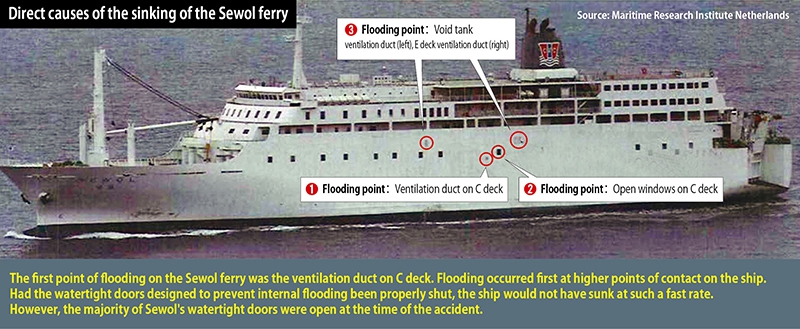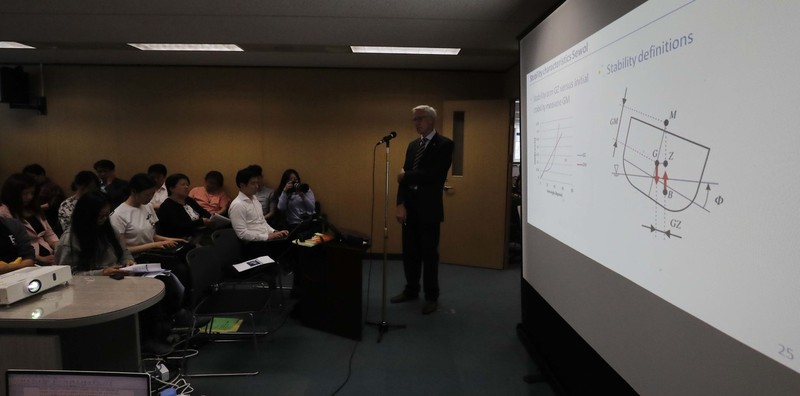 |
|
Direct causes of the sinking of the Sewol ferry
|
MARIN study says shutting watertight doors and properly storing cargo could have prevented tragedy
If the watertight doors on the Sewol ferry had been shut properly, the ferry would not have sunk so quickly, according to the results of a study by an overseas maritime institute that was published on May 30. Watertight doors are designed to seal off chambers on the ship to prevent rapid flooding. According to another analysis, the ship would not have sunk if the cargo had been properly secured. In other words, if even one of the protocols and regulations designed to save lives had been obeyed, the tragedy of that day could have been prevented. On May 30, the Sewol Investigation Commission (SIC) held an event at its office, in the Jeo neighborhood of Seoul, to announce the results of an investigation into the Sewol sinking by MARIN (Maritime Research Institute Netherlands). The SIC had commissioned MARIN to investigate the cause of the sinking. “If the watertight doors [in the lower section of the Sewol] had been shut, the ferry would not have gone down so rapidly. We estimate that it would have remained floating at a list of 65 degrees for a long time,” a representative from MARIN said during the event. In the engine room at the bottom of the Sewol there were two watertight doors and five watertight manholes. But SIC investigators recently found that all of them were open at the time of the accident. Furthermore, there were a total of 10 watertight doors and manholes on the D deck, at the bottom of the hull, but only about three of these were presumably closed. Regulations state that watertight doors must be closed in the case of an emergency to prevent the ship from keeling over in the waves. MARIN’s analysis found that if the 17 watertight doors and manholes in the engine room and on D deck had been closed, the ferry would have been able to stay afloat for a considerable time at a list of 65 degrees. That would basically have created a “golden time” during which the passengers could have been rescued. This conclusion becomes even more compelling when one looks at MARIN’s experimental findings about how the Sewol was flooded. These experiments show that the first direct flooding of the ferry occurred via the ventilation duct on C deck when the ferry had reached a list of 45 degrees. The seawater that flowed in through this duct passed through the ventilation ducts to the room housing the stabilizer. (The stabilizers are balancing fins on both sides of a ship, in the middle at the bottom of the hull.) The problem was what happened next. The water that collected in the stabilizer room flowed directly into the engine room. If the watertight doors in the engine room had been closed, the ship would presumably not have flooded so abruptly. The second instance of direct flooding occurred when the ship reached a list of 48 degrees and water poured through the windows that were open on C deck.
 |
|
The Sewol Investigation Commission (SIC) held an event at its office, in the Jeo neighborhood of Seoul, to announce the results of an investigation into the Sewol sinking by MARIN (Maritime Research Institute Netherlands) on May 30 (Park Jong-shik, staff photographer)
|







